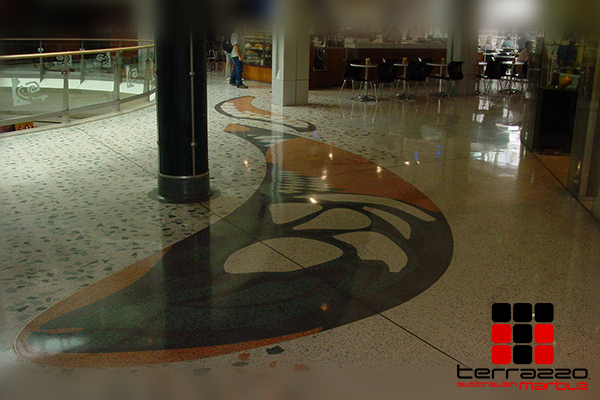Terrazzo – The Ideal Flooring and Installation Material for Builders and Designers
Since its discovery in the early 16th century, terrazzo has become one of the more preferred flooring materials for artisans, builders and craftsmen because of its expansive design possibilities and comparatively low maintenance needs. From its very humble beginnings to its inevitable rise to popularity, terrazzo has remained a strong contender amongst building materials.
Strength and Beauty Combined
To this day, quite a few ancient terrazzo floors are still in existence especially in Venice, Italy. You would be hard-pressed to take a leisurely stroll around the city without running across a beautifully laid out terrazzo floor. This is a testament to terrazzo’s strength and durability.
Terrazzo floors have 3 layers – a concrete foundation or subfloor, a sandy layer and then the last layer where the aggregate materials are combined with cement or epoxy. Each layer contributes to terrazzo’s strength and unique aesthetic. Add to this, the way terrazzo is installed has been improved upon and is continuing to be revolutionized with the help of technology. These days, it is easier to create more intricate and complex designs thanks to modern technology like Waterjet and CNC cutting machines.
Other flooring systems in the market today, whilst aesthetically pleasing fall short when it comes to durability and design flexibility. Hardwood floors have quite a number of natural “enemies”; ceramic tiles are not only limited by its geometric shapes but it is also nowhere near as durable and formidable as terrazzo. Designers and builders often recommend terrazzo to commercial space developers not only because of the many design possibilities that it can offer but more importantly, terrazzo performs really well in high-traffic areas such as food courts, airports, hospitals and hotel lobbies – basically anywhere there will be massive and high impact foot traffic. Furthermore, terrazzo is perhaps the only flooring system that can be used indoors and outdoors.
More than just a Floor
These days, terrazzo is being used in more than just flooring systems. Designers and builders alike have found that with the advent of newer technology, terrazzo can be used for 3D wall installations, steps and risers, wall partitions, kitchen and office countertops, and even art pieces. And the possibilities for more uses and improvements have no end.

